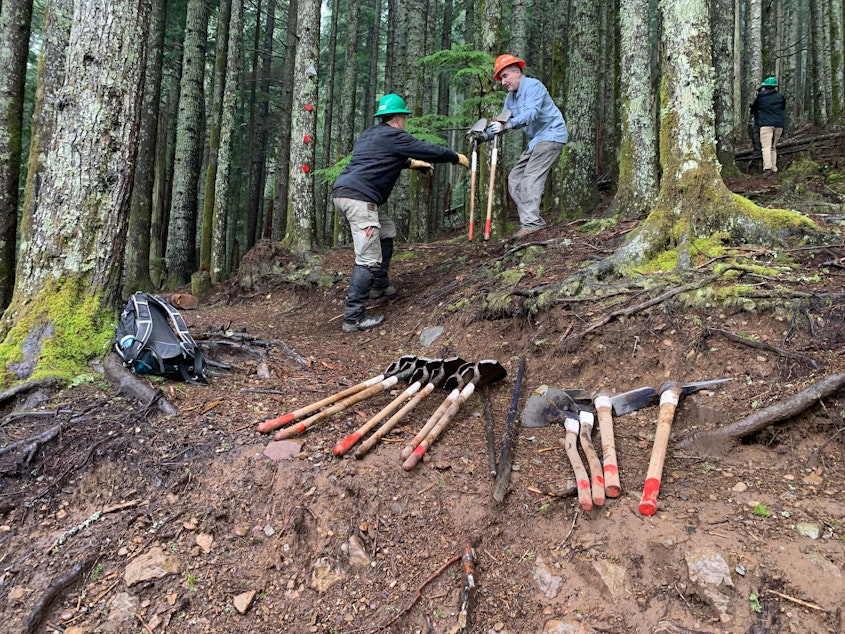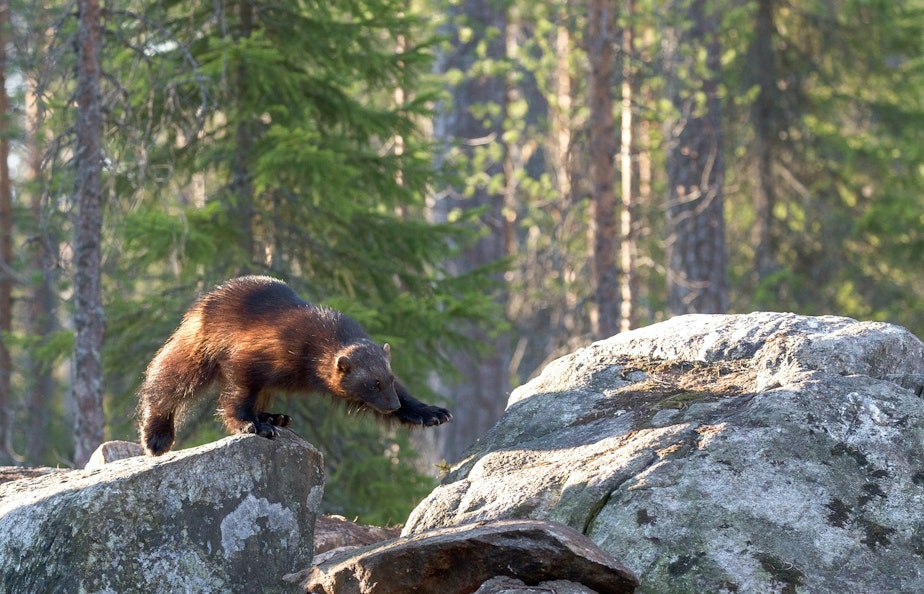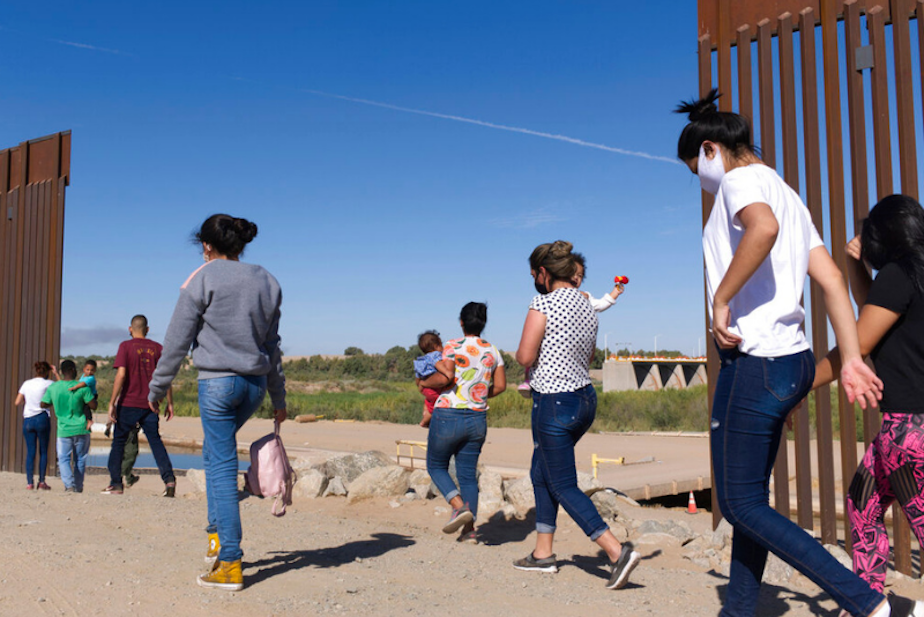Washington's favorite trail won't look the same: Today So Far

- One of Washington state's most popular trails just got a major makeover. It won't look the same this summer.
- The U.S. is behind the times when it comes to rail travel. But could the Northwest finally get an idea for high-speed rail moving down the line?
- 32 tons of medical supplies are being loaded onto a plane and slated to fly out of Seattle to Ukraine.
This post originally appeared in KUOW's Today So Far newsletter for March 30, 2022.
The trail to Rattlesnake Ledge is not far from Seattle. It's extremely popular. Which is why it's never felt like a "hike" to me and more like a pilgrimage with crowds a couple feet in front of me, and also a couple feet behind me, all determined to reach that holy view (though these days, that's often ruined by some clown with a drone). When it was originally designed nearly 20 years ago, planners thought maybe 70,000-ish people would use the trail annually. Today, it gets about 300,000 and has taken quite a beating.
But this summer, the Rattlesnake Ledge path won't be the same trail you've come to know, thanks to a considerable makeover. The Washington Trails Association has been remodeling it over the past year to make it wider, revamp some drainage, and redirect it at some places. It now has a gentler grade, too. Which means that even more people are apt to make the journey. Seattle Now has the full story here.
There is a plane in the Seattle area being loaded up with $3.5 million in medical supplies for Ukraine. It adds up to 32 tons of supplies. The plane is slated to leave this week.
“We need more planes to bring the necessary medical aid to Ukraine from Seattle; not only medicine, but food," said Dmytro Kushneruk, Consul General of Ukraine in San Francisco. "Food is important to bring to those cities that are under siege by Russia.”
The supplies have been gathered from across the West Coast. And the plane is expected to be the first of many more to make this trip. Read more here.
Sponsored
For a few years now, Washington, Oregon, and British Columbia have been considering a bullet train connecting them. It would go from Vancouver, B.C. to Seattle in an hour, and also take an hour to travel from Seattle to Portland. For all the advancements the United States boasts, we are vastly behind when it comes to travel, especially considering trains. But lawmakers think they've found a solution.
The Washington Legislature recently approved $150 million to move the idea down the line. The goal is to use that money to attract federal dollars and increase funding up to $750 million. At least, that is the cost of getting the high-speed rail line designed. It's estimated to cost about $24 billion to $42 billion to actually build. More details here.
AS SEEN ON KUOW

Shy but tenacious, wolverines have worked their way down from British Columbia and returned to Mount Rainier after a century's absence. But are they here to stay? KUOW's Soundside talked with Chris Morgan (The Wild podcast) to find an answer. (generic photo of a wolverine by Hans Veth / Unsplash)
Sponsored
DID YOU KNOW?
The fastest train in the world is Japan's L0 Series Maglev that travels up to 374 mph. In comparison, the Amtrak trains that travel across Washington state can get up to about 79 mph.
As the name implies, it uses magnetic levitation technology to make it so fast. Electromagnetic forces keep friction down and also propel the train. It's a common technology across the globe, but it's not used in the United States. At best, there are studies and plans to make maglev systems happen in the U.S. Ironically, some of the first patents for the technology were filed in the United States in the early 1900s. Even former Cleveland Mayor Tom Johnson filed a patent for a wheel-less, levitating train in 1908. He built a 90-foot miniature test line in his basement. He called it "Greased Lightning."
ALSO ON OUR MINDS

Sponsored
DHS officials brace for a new surge at the border if pandemic restrictions are lifted
Homeland security officials say they're planning for the possibility of a "significant increase" in migration at the U.S.-Mexico border in the coming months — and warn that the end of pandemic-era border restrictions could add to its size.

